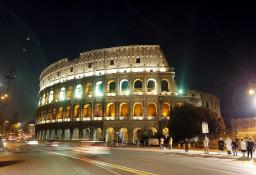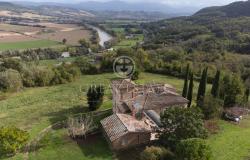A new show at the Colosseum highlights Italy's strong tradition in preserving its art heritage.
The exhibition, entitled Ruins and Rebirth of Art In Italy, shows how efforts to foil tomb raiders stretch from the Renaissance to the present day, culminating in the formation of Italy's world-famous art cops, a Carabinieri unit which has worked in Iraq and other countries targeted by traffickers.
Some 60 works from Italy and abroad, most dating back to classical times, are arranged on the second tier of the Colosseum.
All these works were originally saved from raiders and traders by art protection movements and laws.
Among them are a 100BC Roman statue called The Haranguer or Orator from Florence's Archeological Museum; the famous Birth of Bacchus from Budapest; the Gustiniani Hestia statue of an austere noblewoman from Rome's Torlonia collection; and the 'Dea Roma' (Rome Goddess) from Ostia.
Other significant works are the 'Marciante' Artemis, recovered in 2001 after a five-year fight against traffickers who commissioned no fewer than five copies in a bid to sidetrack art cops; an Apollo found at the villa of famous Ancient Roman jurist Domitius Ulpianus at Santa Marinella near Rome; and a statue of the tragic Greek mythological mother Niobe from an ancient Roman villa, reunited for the first time with its head, recently identified in Poland.
The first section of the show, At the Origins Of Protection, shows how Italy gradually developed a sense of the importance of keeping its heritage intact, from the Renaissance onwards.
It highlights that the famous Doric friezes called 'metope' on an ancient Greek temple at Selinunte, Sicily, were saved from the British Museum's attentions by a law passed in pre-unification Italy.
The second section of the exhibition, The Unification and National Education, moves to the late 19th-century drive by the Italian state to buy up archaeological dig sites and recently discovered artefacts, as well as taking museums out of private hands.
One of the examples is how the Italian government purchased a famed collection of statues of philosophers which had stood since the 17th century in the gardens of the Boncompagni Ludovisi palace - today home to the American embassy.
The show's third section, 20th Century Progress, highlights how Italy started promulgating art conservation and anti-trafficking laws, the most important coming in 1909, which established the principle that antiquities were primarily state property.
As well as the Hestia, this section spotlights a stunning statue of the Greek goddess of wisdom and war Athena, found near Rome and on show for the first time after a long restoration.
The symbol of the show, a terracotta statue of an ancient Mother Goddess dug up in the dead of night at an Abruzzo dig in 2003 to foil hovering thieves, is also part of this section.
The fourth section, entitled Fascist Propaganda and the War, exhibits a range of classical works used by the Fascist regime for propaganda purposes, including a bust of Apollo which Mussolini bought for a visit by Hitler.
The fifth section, The Evolution of Heritage Principles, chronicles the postwar years, showing how war-damaged works were repaired and Italy's devotion to its art came to the fore in the efforts to save Florence from the ravages of a huge flood in 1966 and in later post-earthquake work at Assisi and other sites.
The final section, Counter-Trend, Heritage Protection Today, shows how Italy has upped its efforts to nab tomb raider and traffickers and forged accords for the return of priceless antiquities, most notably from a range of US museums.
''The exhibition shows how Italy gradually learned to save and reclaim its heritage,'' said one of the organisers, Etruscology professor Adriano La Regina, Rome's former Archaeology Superintendent.
The show's organisers have been keen to stress how these unprecedented returns, the subject of a recent hit show, have been possible by agreements which raise collaboration with foreign institutes and envisage loans of equivalent value.
The show, which runs until February 15, 2009, marks the 100th anniversary of the landmark law on the protection of Italy's huge trove of antiquities - the largest of any country.
The 1909 law is still enshrined in the National Heritage Code and its principles were included in Italy's 1948 constitution.










